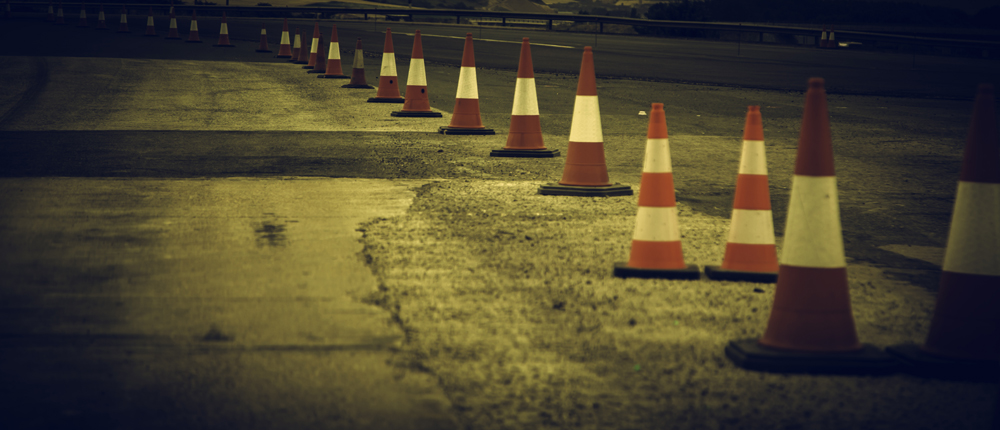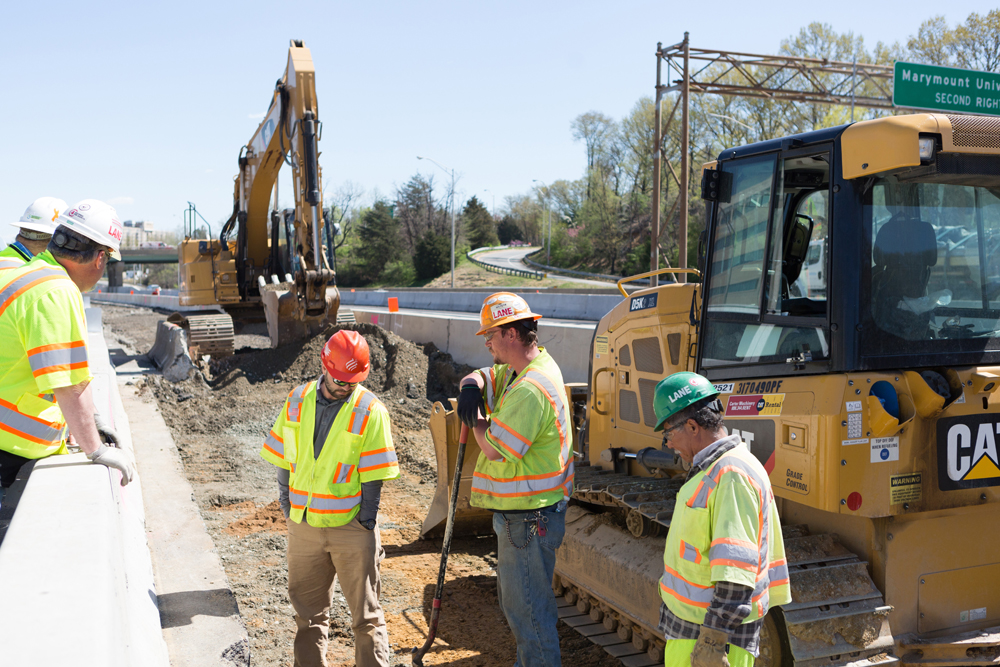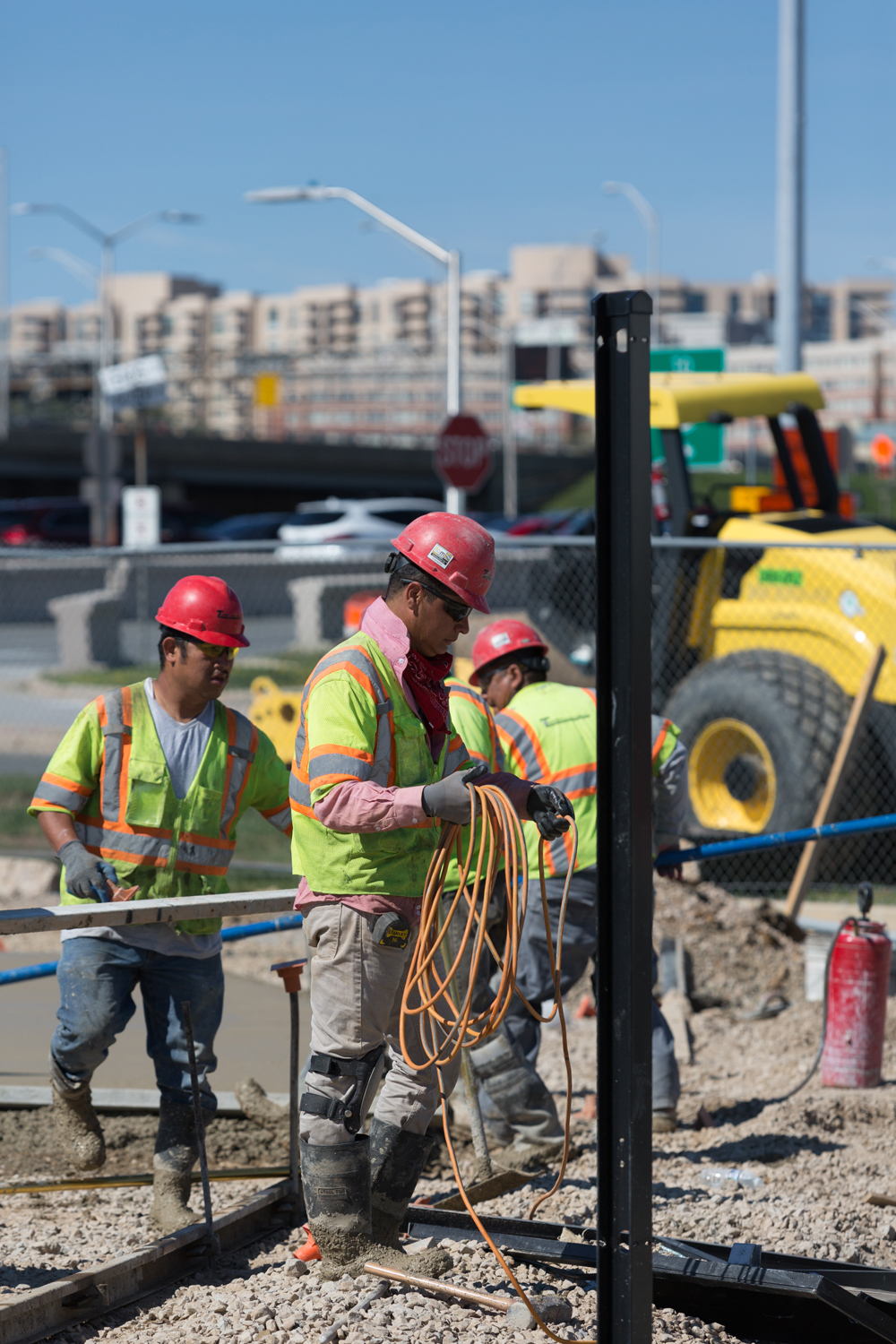
It’s the potential nightmare that road workzone personnel face every time they start a shift: that a vehicle will come careening through the rows of cones that should protect them, possibly causing them serious injury – or worse.
Such workzone incursions have been a longstanding hazard for road workers. Despite persistent attempts by governments and companies, they remain at stubbornly high levels.
The American Road & Transportation Builders Association (Artba) has tracked such incidents over the years: “They peaked in the early 2000s at over 1,200 fatalities,” says Brad Sant, Artba’s senior vice president, safety and education. “They’ve come down as low as 550 but in recent years they’ve been coming back up, to just over 700.”
Last year, when one might have expected the Covid pandemic, with its accompanying drop in economic activity and road traffic, to have reduced such incidents they actually rose. Driving volumes in the US fell 13%, according to the Turner-Fairbank Highway Research Center in McLean, Virginia. However, this merely saw drivers take advantage of less traffic to drive faster, causing more accidents.
Data gap
Sant admitted that as roadworks are operated at the state level in the US, data can be difficult to collate: “We don’t know how many workzones are out there at any one time.”
That makes it hard to know if increasing numbers of incidents are down to the problem getting worse or because there are more workzones operating, giving more chance of incidents happening.
But how do motorists drive into clearly-marked workzones, with their ranks of cones, warning signs and (at night) brightly-lit arrow boards, pointing drivers to the correct lane?
Distraction or inattentiveness is a major reason, said Sant. That can at least partly be put down to the increasing number of gadgets in a modern car – particularly mobile phones – which claim a driver’s attention.
Driving under the influence of drink or drugs plays a part, as does tiredness, especially at night. Fatigue particularly affects truckers, driving through the night when roads are quieter. Certainly, large commercial vehicles are over-represented in workzone incursions, although Artba is still trying to discern the reasons for this.
There has also been some UK evidence that drivers coming across brightly-lit workzones at night can actually be confused by the myriad bright lights meant to guide them - and instead drive into them.
Autonomous issue
One further problem that is likely to emerge in the next few years, said Sant, will be the increasing number of autonomous or self-drive vehicles on the road. Given that they operate by ‘reading’ road markings and steering accordingly, how will they cope with workzones, where road markings often suddenly disappear as a result of the works?
One possibility will be to make use of Vehicle to Everything (V2X) technology, that enables vehicles to communicate with surrounding traffic and road infrastructure using short-range wireless signals. This could incorporate a mapping function to allow autonomous vehicles to navigate around workzones.
Artba has been studying a variety of warning systems for alerting workers to site incursions. Some, such as air horns that sound if they are knocked over, are simple. Others are considerably more complex, such as Irish company CRH’s Advance Warning And Risk Evasion (Aware) system (see Making drivers Aware, below).

(© American Road & Transportation Builders Association | Anita Brenchley)
Much, however, continues to depend on driver behaviour, which shows little sign of changing.
A study some years ago by Virginia Tech, which mounted equipment in vehicles to monitor how motorists drove and reacted to workzones, uncovered high levels of inattention. “This was more a confirmation of what we expected, but at least we have data now,” said Sant.
National Work Zone Awareness Week will include a national stand down at workzones to drive home safety lessons to roads personnel. Although the majority of incidents involves external vehicles intruding on sites, a further challenge is work vehicles within them. Large construction vehicles often have blind spots and drivers perched high in cabins, making it difficult to see nearby personnel.
“In the end, you can’t control what people choose to do,” Sant acknowledged. “What we’re trying to do is understand the minimum requirements for a sensor in a car. We need to accelerate their adaptation, or ensure infrastructure is adapted to automated vehicles as well as current ones. [And] we have to improve the quality of signs or markings so that vehicle sensors can interpret them.”
Information exchange
ITS America’s VP policy programs, Tracy Larkin Thomason, pointed up the US Department of Transportation Work Zone Data Exchange (WZDx) project, for which it has recently awarded $2.3 million in demonstration grants to fund 13 projects nationwide.
WZDx enables infrastructure owners and operators to make harmonised workzone data available for third party use. Specifically, the project aims to get data on workzones into vehicles to help automated driving systems (ADS) and human drivers navigate more safely.
To mitigate incidents of drivers coming through workzones, several states use smart cones fitted with GPS devices that are placed at the start of workzones. These broadcast to Google Maps and Waze, a widely-used route planning software in the US, so drivers have advance warning.
Crash-attenuation vehicles are used in some states, trucks large enough to absorb the impact of a vehicle running into them to protect workers. Autonomous trucks are now being considered, to protect the attenuation vehicles’ drivers from impacts.

(© American Road & Transportation Builders Association | Anita Brenchley)
There is evidence that the programmes are having some effect in reducing accident statistics. However, Thomason agreed that driver inattention – for example, texting while driving – and driving under the influence remained major factors behind workzone incursions.
In Europe, toll operators’ organisation Asecap in 2019 reported more than 360 accidents on its concession motorways in Austria, Denmark, France, Greece, Portugal and Turkey involving motorway service personnel.
Asecap sees potential in Cooperative Intelligent Transport Systems (C-ITS) to improve the health and safety for workers on road works sites. C-ITS will allow road users and traffic managers to share information and coordinate their actions.
Imminent danger detection and warning systems are tested and deployed on the motorway network, Asecap noted. These use cameras mounted in vehicles or trailers (that will also display ‘roadworks ahead’ signs) at the start of workzones to detect approaching vehicles that are not obeying advance warning signs. They will alert both the approaching drivers and workzone operatives via sound or visual devices.
Cognitive overload
Another 2019 report - Road Safety Management at Work Zones by the Conference of European Directors of Roads (CEDR) - gave recommendations to ease the workzone incursion problem. These included organisational measures such as an insistence in tender documents that workzone operators should check their infrastructure and signals or warning devices every two hours.
The aim of this Iris (Incursion Reduction to Increase Safety in road workzones) project is to share best practice on traffic management at workzones with national road authorities in Europe.
The report also recommended that the design of the approach to a workzone should ensure drivers’ cognitive workload was low – and not present them with sudden changes to the road layout. This, together with the use of clear, uniform signs and pictograms throughout Europe, should help.
Additionally, it recommended the use of vehicle restraint systems, ranging from water-filled barriers to a US-developed ‘rigid wall trailer’ - essentially, an articulated truck with a long, rigid barrier stretching from behind the cab to the rear axles, suitable for protecting small sites.
Making drivers Aware
CRH’s Aware uses radar, GPS and orientation sensors, together with proprietary software, to ‘learn’ the active workzone, the equipment and individual workers within it. It includes a sensor, Raven, which holds the system’s software and main radar, and which is mounted within the workzone. It is the system’s communication node and ‘brain’. Meanwhile WorkTrax, an individual GPS-based worker alert unit, knows individual workers’ positions relative to the equipment and gives an audible and vibrating alert if they are in harm’s way, at ranges of up to 200 yards from Raven. Finally, a threat deterrent kit includes an XGPS for positioning and movement of the equipment and also contains the visible and audible alerts that are attached to the equipment. This warns workers and drivers that an intrusion has occurred into the work zone.











